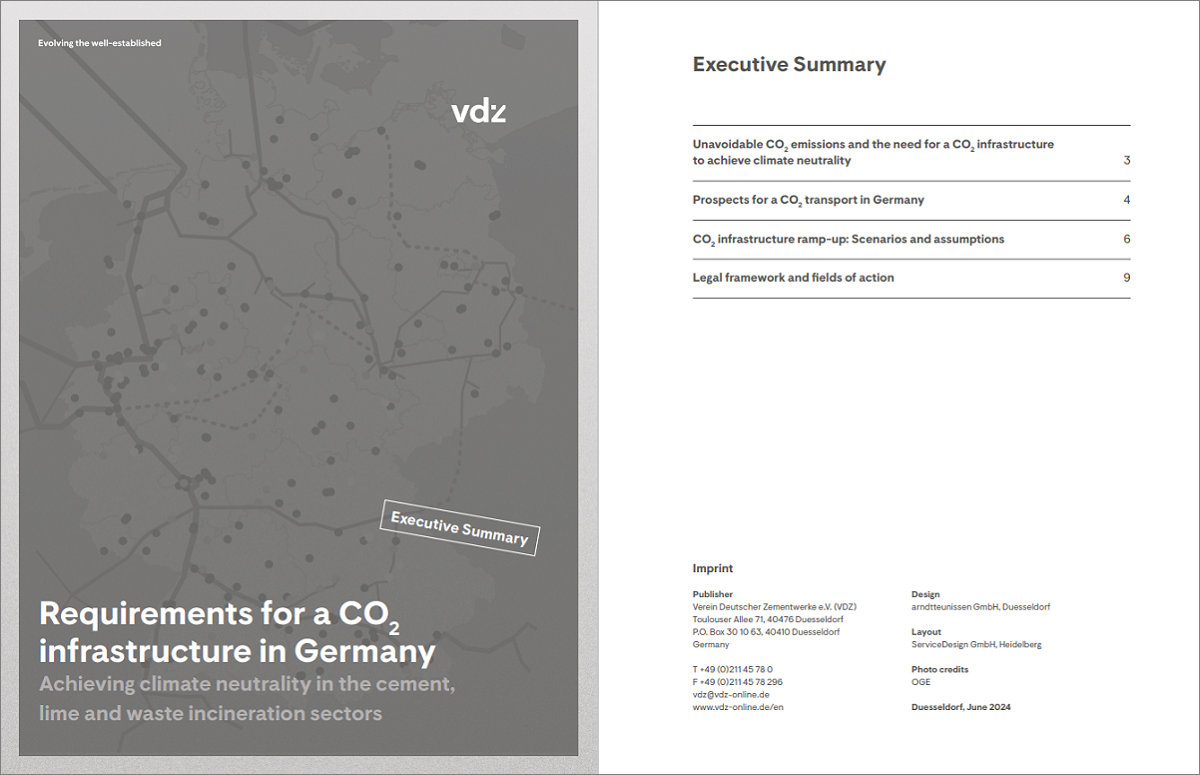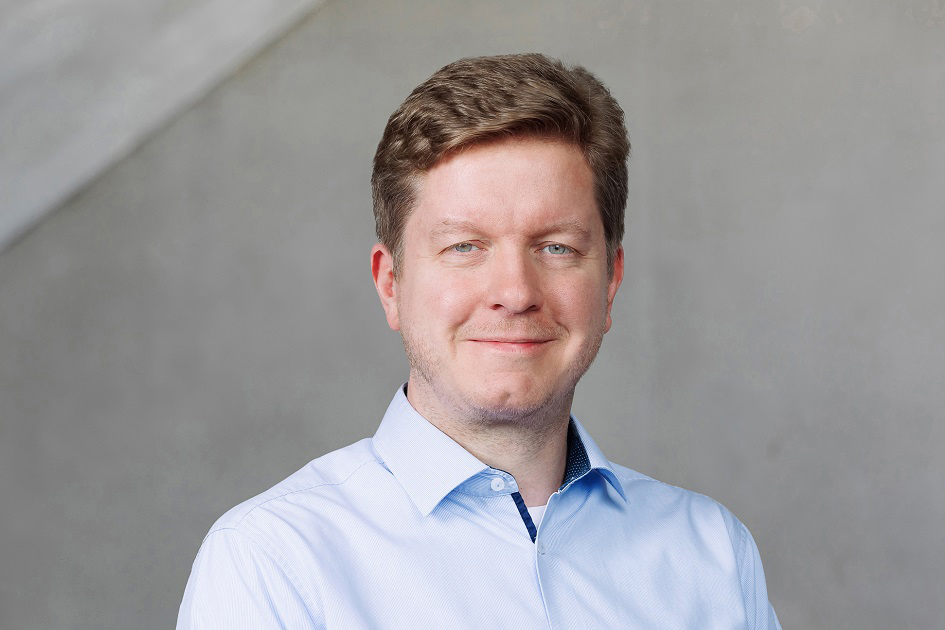Requirements for a CO₂ infrastructure in Germany
Due to the high proportion of unavoidable CO₂ emissions, there is no way around CO₂ capture, storage and utilisation when it comes to decarbonising the cement and lime industries and waste incineration. ”The development of a CO₂ infrastructure in Germany is essential for these industries”, says Christian Knell, President of the German Cement Works Association (VDZ). And time is pressing: Cement manufacturers and other industries in the EU emissions trading scheme must produce their products in a largely climate-neutral way by 2040. “To achieve this, companies need a CO₂ pipeline network by 2035 at the latest”, continues Knell. In a study, VDZ has analysed what a German CO₂ pipeline network could look like and what the requirements are for the CO₂ infrastructure. In order to make the results of the study accessible to an international audience, an English summary is now also available.
With the recently published study “Requirements for a CO₂ infrastructure in Germany - Achieving climate neutrality in the cement, lime and waste incineration sectors” VDZ highlights the unavoidable CO₂ emissions to be expected and analyses how the short, medium and long-term CO₂ transport requirements in the three sectors will develop and how a CO₂ infrastructure should be designed.
The development of CO₂ capture over time is decisive for transport requirements. “Many cement manufacturers are in the starting blocks with their CO₂ capture projects. What is missing is the national legal framework and a suitable transport infrastructure”, emphasises VDZ Managing Director Martin Schneider.
In the main scenario of the study, climate neutrality in the three sectors considered results in an annual CO₂ transport demand in Germany of 6.5 million tonnes in 2030, around 13 million tonnes in 2035 and around 35 million tonnes in 2040. The total quantity increases to 46 million tonnes by 2045 because the biogenic CO₂ share will also be captured, so that even negative emissions are achieved. Additional quantities for transit from the neighbouring countries of Austria, Switzerland and France amounting to 15 to 20 million tonnes of CO₂ per year must also be taken into account from 2035 on.
The rapid development of a CO₂ pipeline network by 2035 at the latest would enable cumulative CO₂ savings of around 500 million tonnes of CO₂ over 20 years in the sectors under consideration. It is worth noting that if the start of pipeline transport is significantly delayed, cumulative savings of only around 230 million tonnes of CO₂ can be achieved. In this case, an additional 270 million tonnes of CO₂ would be released into the atmosphere and climate neutrality in Germany would not be achieved by 2045.
The analysis shows clearly that in the medium and long term, in view of the expected quantities, the majority of CO₂ will have to be transported via pipeline. “The early establishment of a CO₂ pipeline network is crucial in this case. The first project announcements have been made by network operators, on the basis of which this study shows the prospects for a nationwide CO₂ network”, explains Manuel Mohr, project manager of the study at VDZ. In certain cases, however, the train and possibly the ship will also play a relevant role, as the scenarios analysed show.
This results in different technical requirements for each of the transport options which have a direct impact on the economic efficiency of the transport chain. Another key factor is the timely connection of the sites to the CO₂ infrastructure. Regarding rail and ship transport in particular, considerable investment is also required in the loading infrastructure at the sites.
In addition to CO₂ transport, the required capacity of CO₂ sinks is a key factor for the rapid development of CO₂ capture over time. Numerous storage projects are currently being planned and developed in other European countries, meaning that significant storage capacities can currently be expected from the 2030s on - assuming they are realised as planned. “Germany is also called upon to contribute to the development of a European storage infrastructure and to take responsibility for its own CO₂ emissions. The draft of the Carbon Dioxide Storage and Transport Act (KSpTG) is very promising here, as it is intended to enable commercial offshore storage and pipeline transport in Germany”, says Schneider.
The VDZ study estimates the investment required for the construction of the identified German CO₂ pipeline network with a length of 4,800 kilometres at around 14 billion euros. This results in calculated costs for pipeline transport of CO₂ of 25 to 35 euros per tonne. For CO₂ transport by rail for distances of more than 500 km, costs of 35 to 60 euros per tonne CO₂ are expected. These costs may be lower for shorter transport distances.
In addition to building the infrastructure, the energy requirements are also considered. “CO₂ capture is generally very electricity-intensive. This is why the demand for renewable energy for climate-neutral cement and lime production in Germany will increase almost fourfold from today's level - from 4.7 TWh to around 17 TWh in 2045”, emphasises Schneider. The thermal energy demand in the three sectors will increase by almost 100,000 TJ per year or 20% compared to the status quo.
”However, building a CO₂ infrastructure is not just a technical challenge. Above all, social and political support and the necessary legal framework for rapid implementation are crucial prerequisites. The latter must be in place by the end of 2024 at the latest if the projects for CO₂ capture in the industries are to be implemented as planned”, emphasises VDZ President Knell.
The Executive Summary of the VDZ study ”Requirements for a CO₂ infrastructure in Germany” is available to download free of charge at:
About VDZ:
VDZ was founded in 1877 as the Association of German Cement Manufacturers. As a joint organisation of German cement manufacturers, it has been committed to envi-ronmentally friendly cement production and high-quality concrete construction for more than 145 years. As a research and competence centre for cement, concrete and envi-ronmental protection, VDZ is recognised and valued worldwide for its practical research and comprehensive range of services along the entire value chain.
We would be pleased if you would include this VDZ press release in your media coverage and send us a specimen copy.

